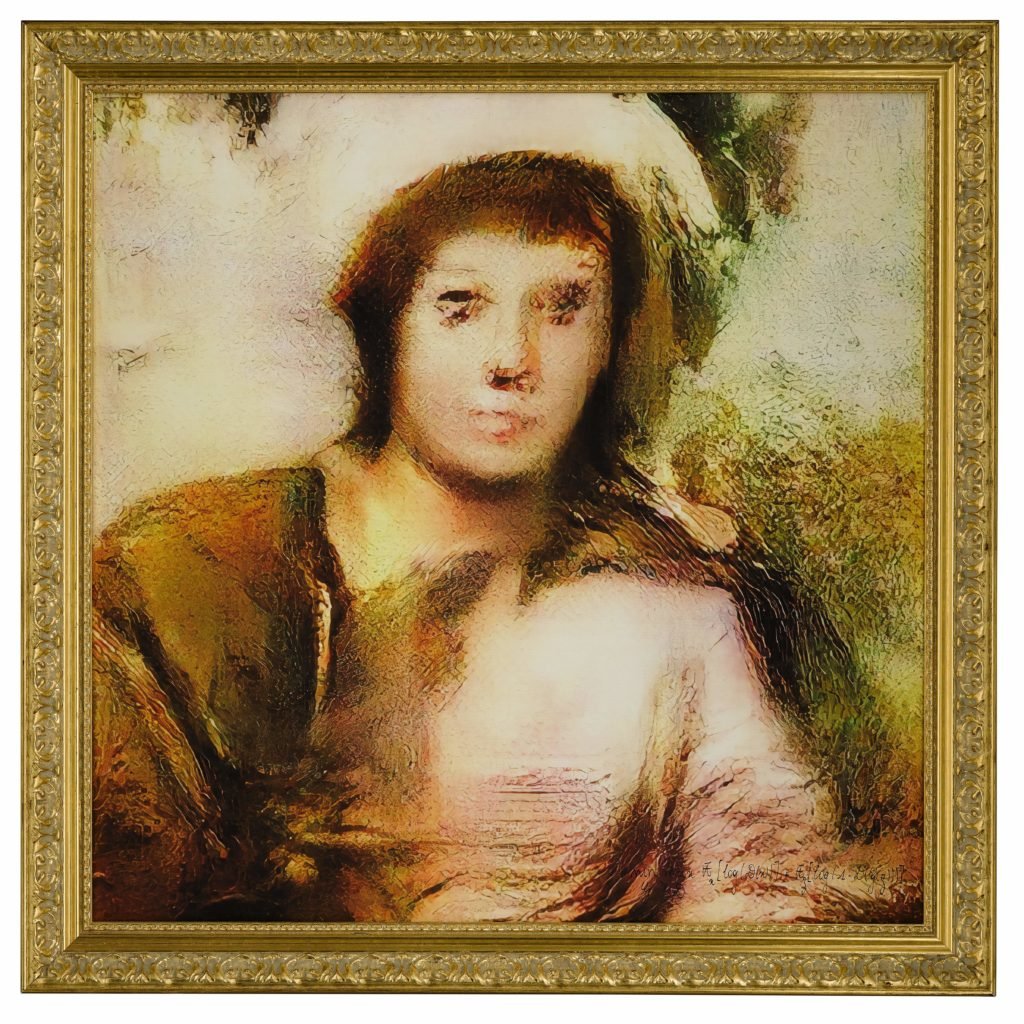Auctions
Has the AI-Generated Art Bubble Already Burst? Buyers Greeted Two Newly Offered Works at Sotheby’s With Lackluster Demand
The two lots failed to spark the same frenzied bidding that Obvious's work generated last year.

The two lots failed to spark the same frenzied bidding that Obvious's work generated last year.

Caroline Goldstein

A little more than a year ago, it seemed as if the art world had crossed a Rubicon when an AI-generated portrait sold for a staggering $432,500—43 times its $10,000 high estimate. The shocking result seemed to open the door to a future in which a living, breathing person need not have any hand in actually creating a work of art. But today’s results at Sotheby’s contemporary art day sale suggest that human artists need not fear—that dystopian future is still a long ways off.
Two works by the same collective behind last year’s record-setting AI portrait, Obvious, had a decidedly lackluster performance at Sotheby’s on Friday. After less-than-competitive bidding, both examples found buyers within or just above their estimates—around 95 percent less than their predecessor in 2018.
The works sold today were made through a similar process to the one that sold last year, igniting the imagination of tech and art speculators around the world. Portrait of Edmond de Belamy (2018) was the brainchild of the somewhat controversial Paris-based collective Obvious, which marries art and artificial intelligence to yield algorithms that propagate the artwork itself.
The algorithms come from a Generative Adversarial Network (GAN) that aggregates information fed by the Obvious group members. In the case of the “Famille de Bellamy” series, the data set consisted of 15,000 portraits dating from the 14th to the 20th centuries, at which point the generator system creates a new portrait based on the formal properties of existing works.
A more recent series, “Electric Dreams,” was created based on Ukiyo-e stamps created in Japan between 1780 and 1880.

La Baronne de Belamy, created by Obvious Art. Courtesy of Sotheby’s.
Neither work at Sotheby’s came from Obvious themselves; they were consigned by private collectors who bought the works from the the Paris-based collective in the past year. La Baronne de Belamy (2018), another from the record-setting series, was estimated for $20,000 to $30,000; the second work, Katsuwaka of the Dawn Lagoon (2018) from the more recent “Electric Dreams” series, was estimated for $8,000 to $12,000.
After less than 25 seconds of bidding, the Belamy portrait sold for $20,000, just meeting its low estimate, or $25,000 with fees. Within the minute, the next lot, Katsuwaka, edged past the presale high estimate to hammer for $13,000, or $16,250 with fees.
The art world was generally skeptical of the surge of electronically created artwork, even after the Bellamy boom, and the market took note. An AI-generated work at Sotheby’s by the artist Mario Klingemann in London sold in March for a modest $51,000.